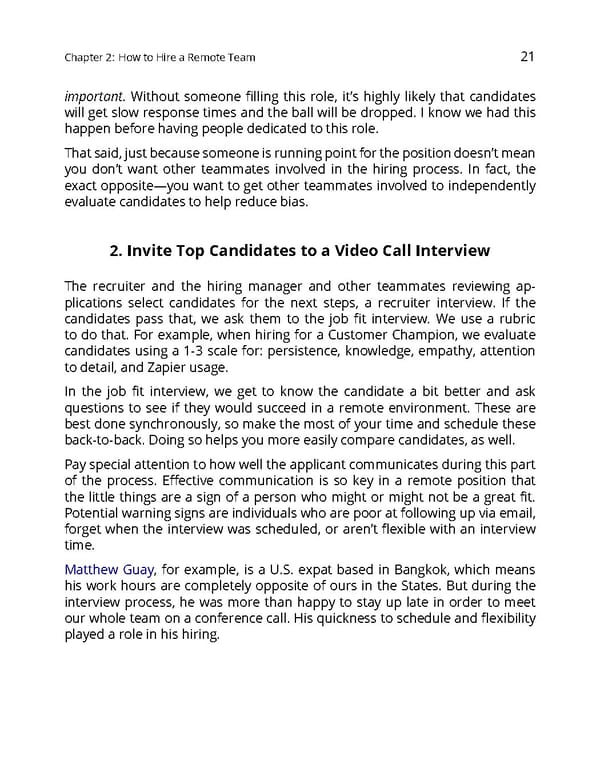Chapter2: HowtoHireaRemoteTeam 21 important. Without someone filling this role, it’s highly likely that candidates will get slow response times and the ball will be dropped. I know we had this happenbeforehavingpeoplededicatedtothisrole. Thatsaid,justbecausesomeoneisrunningpointforthepositiondoesn’tmean you don’t want other teammates involved in the hiring process. In fact, the exact opposite—you want to get other teammates involved to independently evaluate candidates to help reduce bias. 2. Invite Top Candidates to a Video Call Interview The recruiter and the hiring manager and other teammates reviewing ap- plications select candidates for the next steps, a recruiter interview. If the candidates pass that, we ask them to the job fit interview. We use a rubric to do that. For example, when hiring for a Customer Champion, we evaluate candidates using a 1-3 scale for: persistence, knowledge, empathy, attention to detail, and Zapier usage. In the job fit interview, we get to know the candidate a bit better and ask questions to see if they would succeed in a remote environment. These are best done synchronously, so make the most of your time and schedule these back-to-back. Doing so helps you more easily compare candidates, as well. Payspecial attention to how well the applicant communicates during this part of the process. Effective communication is so key in a remote position that the little things are a sign of a person who might or might not be a great fit. Potential warning signs are individuals who are poor at following up via email, forget when the interview was scheduled, or aren’t flexible with an interview time. Matthew Guay, for example, is a U.S. expat based in Bangkok, which means his work hours are completely opposite of ours in the States. But during the interview process, he was more than happy to stay up late in order to meet our whole team on a conference call. His quickness to schedule and flexibility played a role in his hiring.
 The Ultimate Guide to Remote Work Page 24 Page 26
The Ultimate Guide to Remote Work Page 24 Page 26